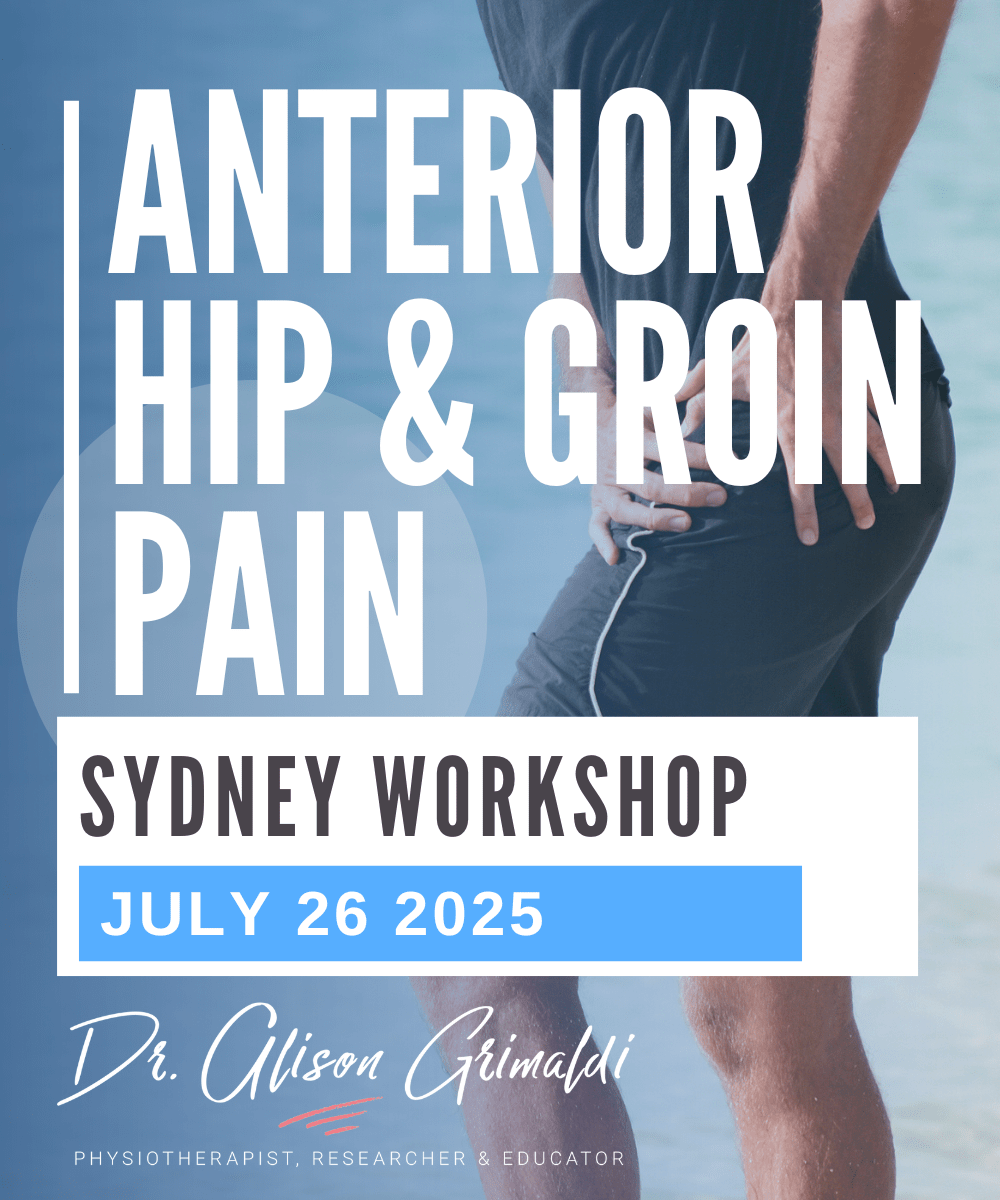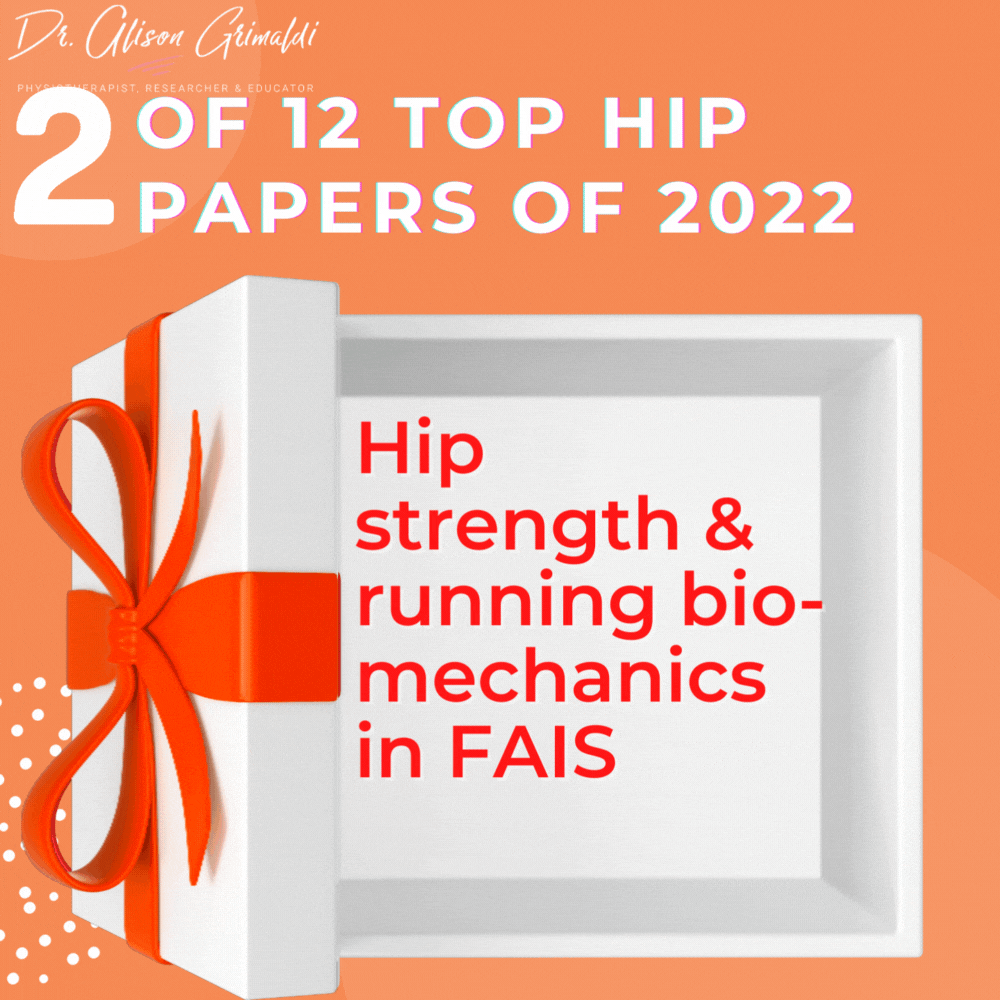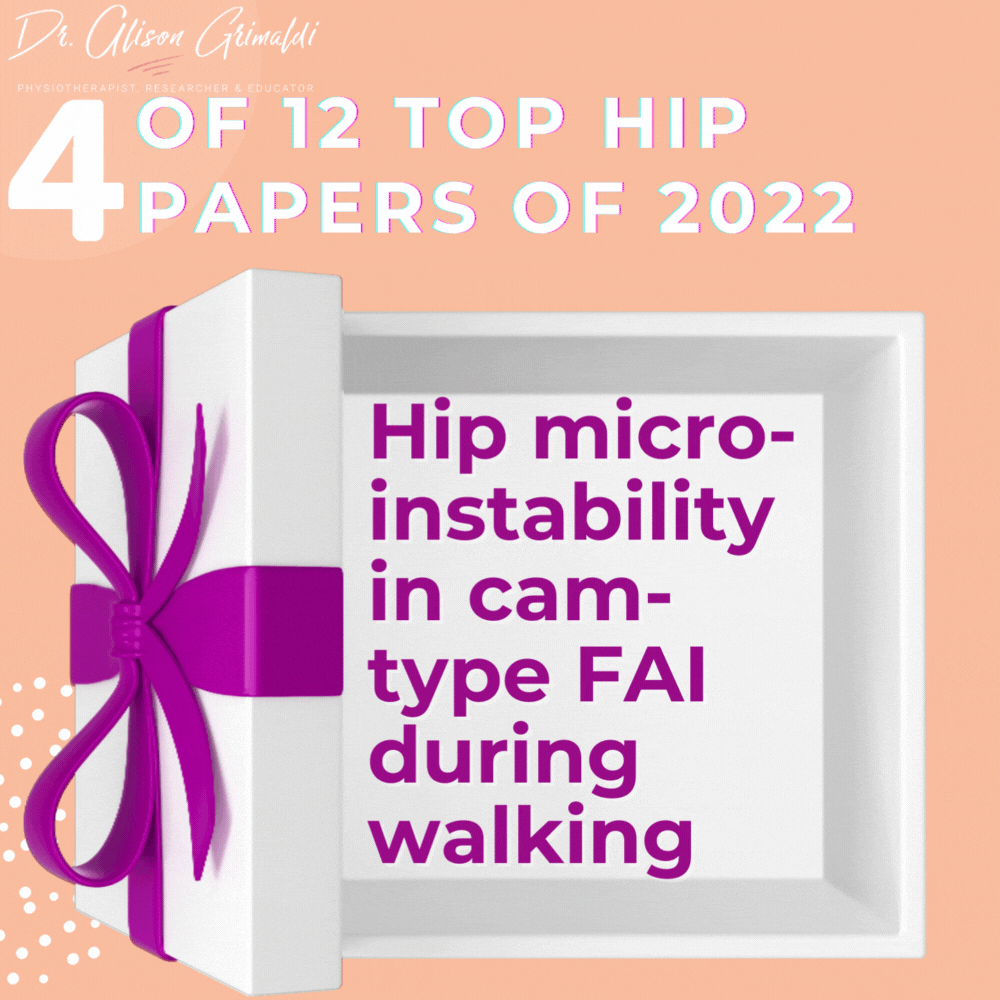3 of 12 Top Hip Papers of 2022 – Influence of deep hip muscles on hip joint loads

Welcome to day 3 of my 12 Top Hip Papers of 2022 series of miniblogs. If you missed Day 2, you'll find a link at the bottom of this page to take you back. For day 3, we'll be looking at key points from a paper that investigated the impact of the deep hip musculature on the direction of hip joint forces. Interesting findings with important clinical implications - read on!
Can't make the workshop? Do the Online Course

3 of 12 Top Hip Papers of 2022: Activation of the deep hip muscles can change the direction of loading at the hip
The paper I have selected for No. 3 of our 12 Top Hip Papers 2022, is a study that showed that the deep hip muscles can reduce rim loading and change the direction of hip loading away from commonly damaged areas of acetabular cartilage.
Although the model showed maximal activation was required to achieve this, the model primarily considered activation of the deep posterior muscles and did not take into account the added effect on the capsule. Deep muscles with capsular attachment exert important effects by tensioning the capsule. It is difficult to anticipate this effect in modelling studies. It might be that the deep hip muscles actually exert greater effect at lower levels of activation, if they are also exerting effect via the hip capsule.
Study Aim:
- This study aimed to determine the contribution of the deep hip muscles to the direction of hip loading in the acetabulum, during walking and squatting.
What was done:
- Cohort: 12 healthy participants, 24±4yrs, 4 females.
- Hip contact forces were calculated during walking and squatting using EMG-informed neuromusculoskeletal modelling.
- Data for the neuromusculoskeletal modelling was collected from:
- MRI - to determine each individual's hip joint centre
- 3-D system - Vicon - 61 markers, 12 cameras
- EMG - 16-channel wireless system (muscles noted in graphic below), and
- 3 embedded force plates.
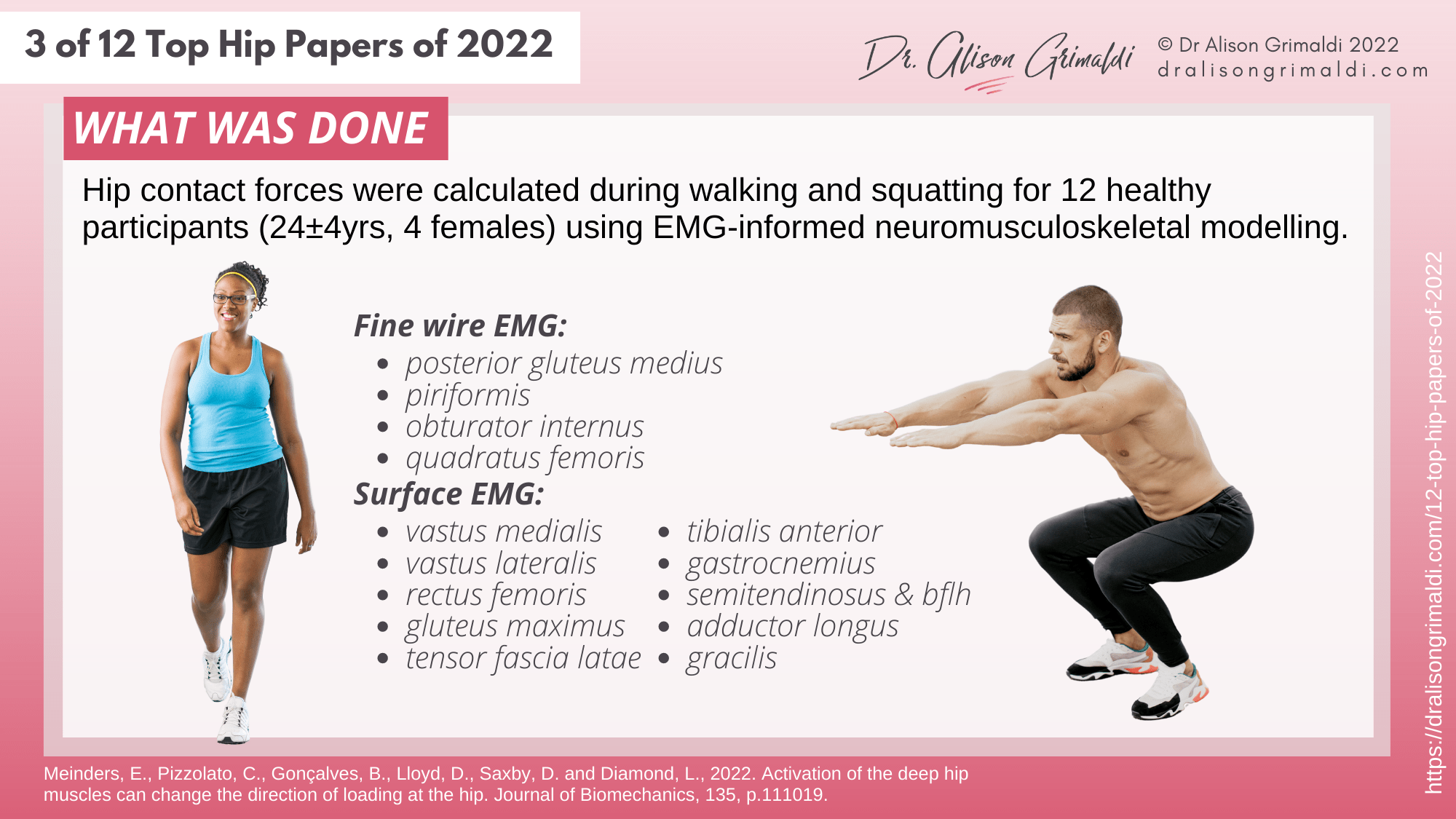
Key Findings:
Optimal function of the deep hip musculature is likely to be important in control of hip pain and potentially in long term joint health, perhaps even moreso for those with acetabular dysplasia and/or hypermobility.
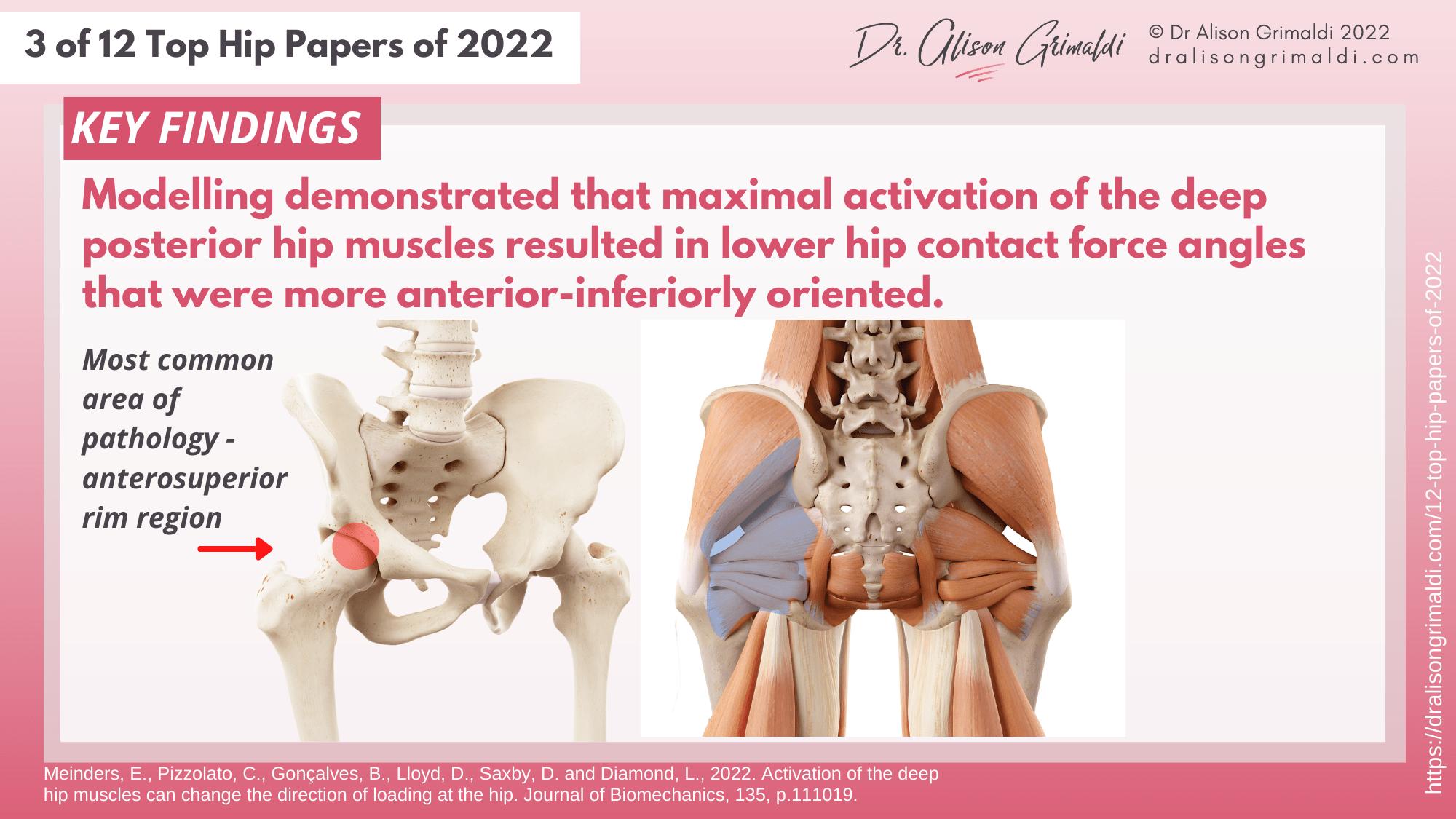
The relative importance of the deep hip musculature for controlling and directing joint forces will vary considerably depending on morphology. For example, someone with acetabular dysplasia will have reduced acetabular coverage of the femoral head anteriorly, posteriorly or globally. We know those with dysplasia experience greater translation of the femoral head within the acetabulum, which can over time cause deterioration of chondrolabral health.
Hypermobile individuals will also have reduced capsuloligamentous support, and often we see combinations of dysplasia and hypermobility. But even those with femoroacetabular impingement have been shown to have abherant movement of the centre of rotation (look out for an upcoming paper in this Top 12 Hip Papers of 2022 series).
Clinical Implications:
- If activated maximally, the deep hip muscles can reduce rim loading and change the direction of hip loading away from commonly damaged areas of acetabular cartilage (anterosuperior rim region).
- Targeted training of these muscles may be useful in those with hip joint related pain associated with superior chondrolabral rim pathology
Like to learn how to optimise function of the deep hip musculature?
Come along to a workshop in 2023!
Don't miss out! Book a workshop today! There will also be more workshops available soon. I will be in Canada and New York in May, and UK and Europe in September and October 2023. Hope to see you there.
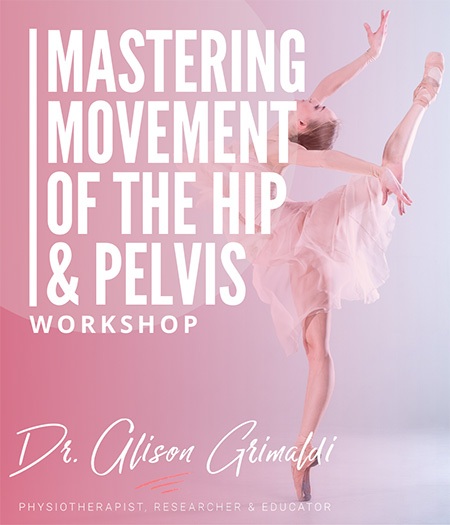
In my Mastering Movement of the Hip & Pelvis workshop, you'll get in depth information and practical experience with assessment of hip muscle function, and developing a targeted exercise program.
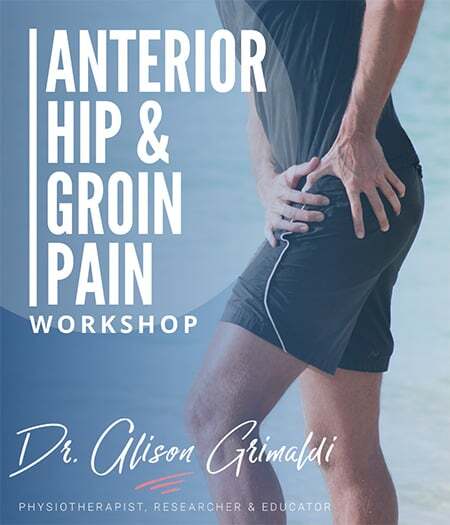
In my Anterior Hip & Groin Pain workshop, you'll learn how to assess for anterior hip impingement and instability, and how to tailor your exercise program to optimise both deep and global muscle function.
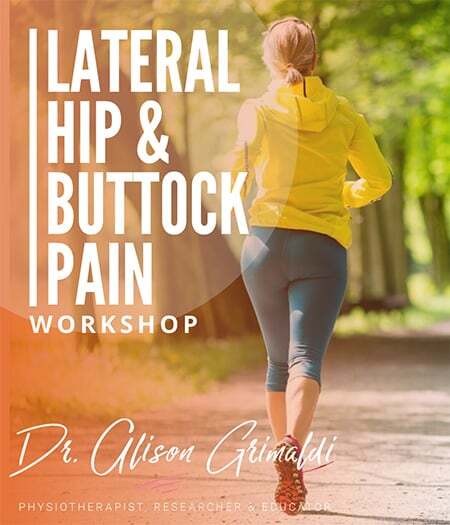
In my Lateral Hip & Buttock Pain workshop, we'll cover assessment of posterior hip impingement and instability, and specific exercise strategies and modification to optimise muscle function and outcomes.
Another great Anterior Hip Pain blog
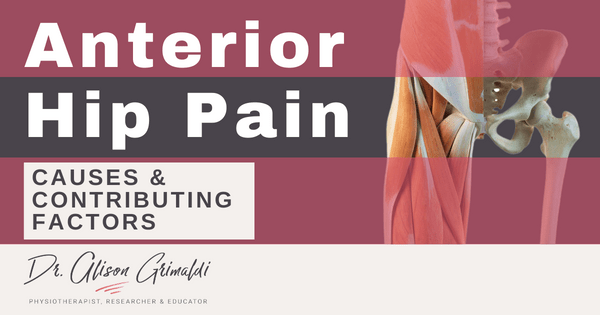
Anterior Hip Pain: Causes & Contributing Factors
Adequate consideration of individual causes and contributing factors is important for best outcomes.
I hope you enjoyed the infographics and key learnings from Day 3 of my 12 Top Hip Papers of 2022. There are 9 more papers to come, so stay tuned and return to the blog page each day to see what other top papers and infographics I have for you!
If you missed yesterday's Hip Paper, click the link below to catch up!

